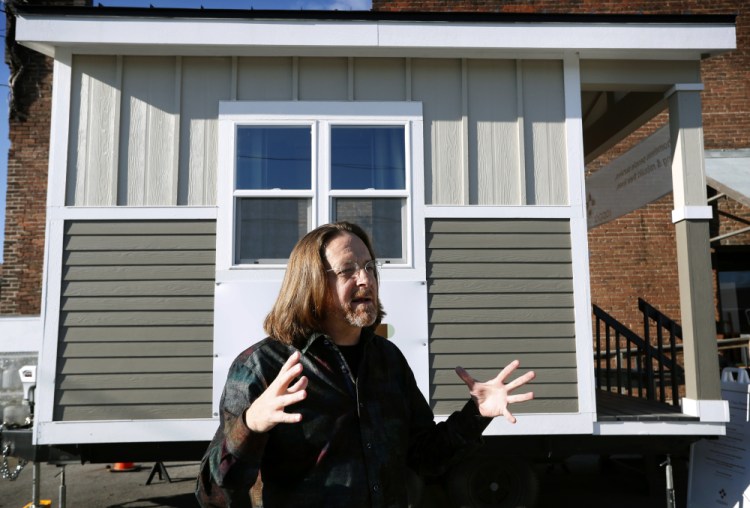DES MOINES, Iowa — As he tows a 96-square-foot house around Des Moines, Joe Stevens is overwhelmed by the intense, sometimes tearful support he receives from churches, schools and service groups for his plan to use the trendy little structures to help homeless people.
But when Stevens actually tried to create a village of the homes in Iowa’s largest city, the response was far different.
“We got shot down,” said Stevens, who leads a group that proposed erecting 50 tiny homes on a 5-acre industrial site north of downtown Des Moines. “It was a sense of fear, uncertainty and doubt, a kneejerk situation.”
Tiny homes have been promoted as the solution to all kinds of housing needs – shelter for the homeless, an affordable option for expensive big cities and simplicity for people who want to declutter their lives. But the same popularity that inspired at least six national TV shows about the homes often fails to translate into acceptance when developers try to build them next door.
In at least a dozen cases across the nation, neighbors organized to stop tiny house projects. Sometimes the efforts moved ahead anyway, but in many cases, the communities were blocked.
“People say, ‘Tiny home are great and cool, and you can put that village anywhere but right across the street from my subdivision,”‘ said Chris Galusha, president of the American Tiny House Association.
The current interest in small houses follows a steady growth in the median size of homes, from 1,200 square feet in the 1940s to about 1,860 square feet in this decade.
As home sizes spiraled up, tiny house pioneers in the 1990s began promoting the austerity and frugality of spaces smaller than most garages. The idea captivated millions of Americans, even those who remain in more spacious accommodations.
The opposition is often focused on developments for homeless people, as in Des Moines. But in many cases, it also extends to tiny home communities designed for the open market.
That’s what happened in Charlotte, North Carolina, where a developer had hoped to build 56 tiny homes near a neighborhood filled with ranch houses and split-levels. Opponents argued that the tiny homes would clash with existing housing, cause traffic problems and fail financially due to their projected $90,000 pricetag.
“The tiny houses, we feel they’re a fad,” said Robert Wilson, who helped lead the opposition. “It’s a niche market, and we think it is not less expensive.” For his project to help the homeless, Stevens arranged for high school and college students to build the houses, with donations to cover costs. But after being thwarted in the search for a building site, the Des Moines group he heads, called Joppa, turned to the nearby city of Van Meter about locating the village there.
“We’re not giving up because we really do believe this is an answer to a serious problem,” said Stevens, who noted that about 250 people are typically homeless in the Des Moines area.
Send questions/comments to the editors.



Success. Please wait for the page to reload. If the page does not reload within 5 seconds, please refresh the page.
Enter your email and password to access comments.
Hi, to comment on stories you must . This profile is in addition to your subscription and website login.
Already have a commenting profile? .
Invalid username/password.
Please check your email to confirm and complete your registration.
Only subscribers are eligible to post comments. Please subscribe or login first for digital access. Here’s why.
Use the form below to reset your password. When you've submitted your account email, we will send an email with a reset code.